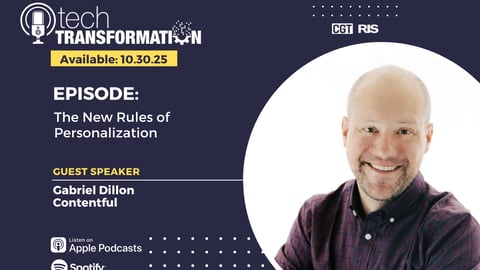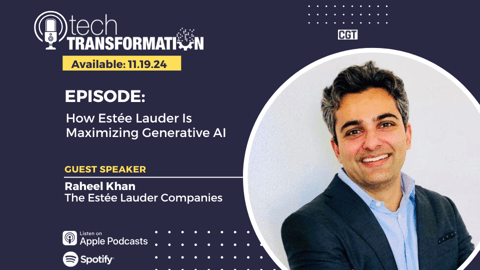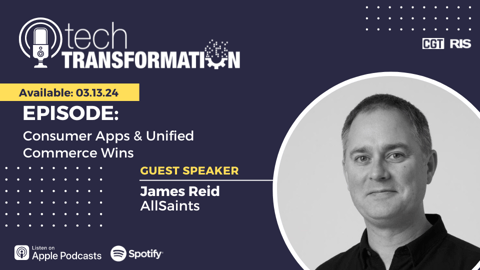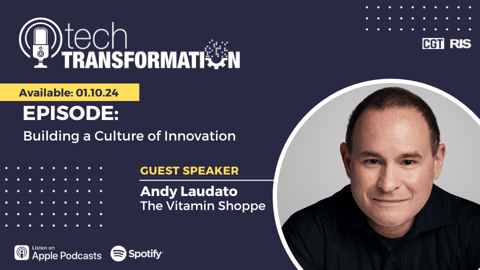Tech Transformation Podcast: Kimberly-Clark’s Jeannette Chantalat On New KPIs for Sustainable Innovation
Like many consumer goods companies and retailers, Kimberly-Clark wants to put consumers at the center of everything it does. The company also wants to take things a step further by doing it in a way that advances their sustainability goals, and doing this successfully as a multi-national company means working cross-functionally in some very unique ways.
In this episode of Tech Transformation, we’re talking with Jeannette Chantalat, Kimberly-Clark’s Global Head, Innovation & Sustainability Accelerator, about how they’re using their vast reach to understand consumers at very local levels — and then marrying it with technology to meet consumer needs in new and more sustainable ways.
Listen to learn:
- How Kimberly-Clark leverages consumer insights in product development to advance their sustainability goals
- How digital prototyping plays a role
- The new ways they’re measuring success with their retail partners across the value chain
- What these KPIs look like
- What they’ve learned about when and why consumers will pay more for greener products.
Subscribe
Excerpts
On how they’re using digital prototyping: “We've done this a lot in a number of our categories. Even when we think about some of our sustainability examples in reusables, we had recently launched in Australia our reusable swim offering in our Huggies Little Swimmers business. A lot of it had to do with making sure we get the prototypes in front of consumers and understanding [their needs] because in so much of many of our categories, there's a strong functionality to it, but there's also a strong consumer experience, visual appeal. And when you think about babies and Little Swimmers, just an amazing brand, the cuteness factor has a huge impact to it. So it can't just be functional. It has to satisfy all sorts of needs that the consumers have.
“So even getting that in front of consumers, understanding [that] of course, it has to meet the functionality. It has to meet the fit and the comfort. That's something that we cannot compromise on, but how can we delight consumers through design and all the while delivering something in a much more sustainable solution? So that's an example that we've done and it's been scaling around the world.”
On taking a cross-functional integrated approach to sustainability: “It boils down to two things. It's mindset and measures. When we talk about mindset, it's really about ensuring that we learn quickly. It's all about the race to learn. And when you're racing to learn, you're going to have great successes and you're also going to have failures along the way. Failure is not the opposite of success, but actually a part of success.
"This mindset of progress over perfection is incredibly important, and we see that early on when you think about an innovation funnel, where you have many, many ideas coming in, and you know that not all of them can make it all the way to launch. Only the best ideas can survive to actually make it to launch. But on that journey, we're learning every single step of the way. and feeding that back into the innovation teams and understanding why did we succeed and why did we fail? That's incredibly important.
“And making sure that we're constantly learning because our consumers are always changing, our market landscapes are always changing, because we know that when we do something great today, we're just setting the bar higher for tomorrow. So the innovation mindset has to be one of constant learning. and progress over perfection. ...
“The second element is really the measures. And we learned this very on in our innovation transformation, which is, how do we focus on the measures that matter? How do we get to the right KPIs? We realized as we dug into this that for a number of years, we were actually measuring the number of projects, the number of launches that were actually going into market. And that's certainly a way to do it, but we realized that we should be measuring the growth impact of each of those projects. And only when we get to a certain amount of growth impact, can we progress projects to the next stage?
“Getting that right view on the net incremental growth that we're delivering through our pipeline has completely transitioned the way we think about the value of our pipeline. And it feeds, if you have the right KPI, it feeds that mindset. And so it creates this virtuous cycle of when we're looking for growth, we can learn from that and then feed that back into the cycle. And we've learned that with that right KPI, you can start having those deeper conversations early on in the funnel.”
Tech Transformation Videos
Looking for just a snapshot? Watch a segment of the interview and see more Tech Transformation episodes.








